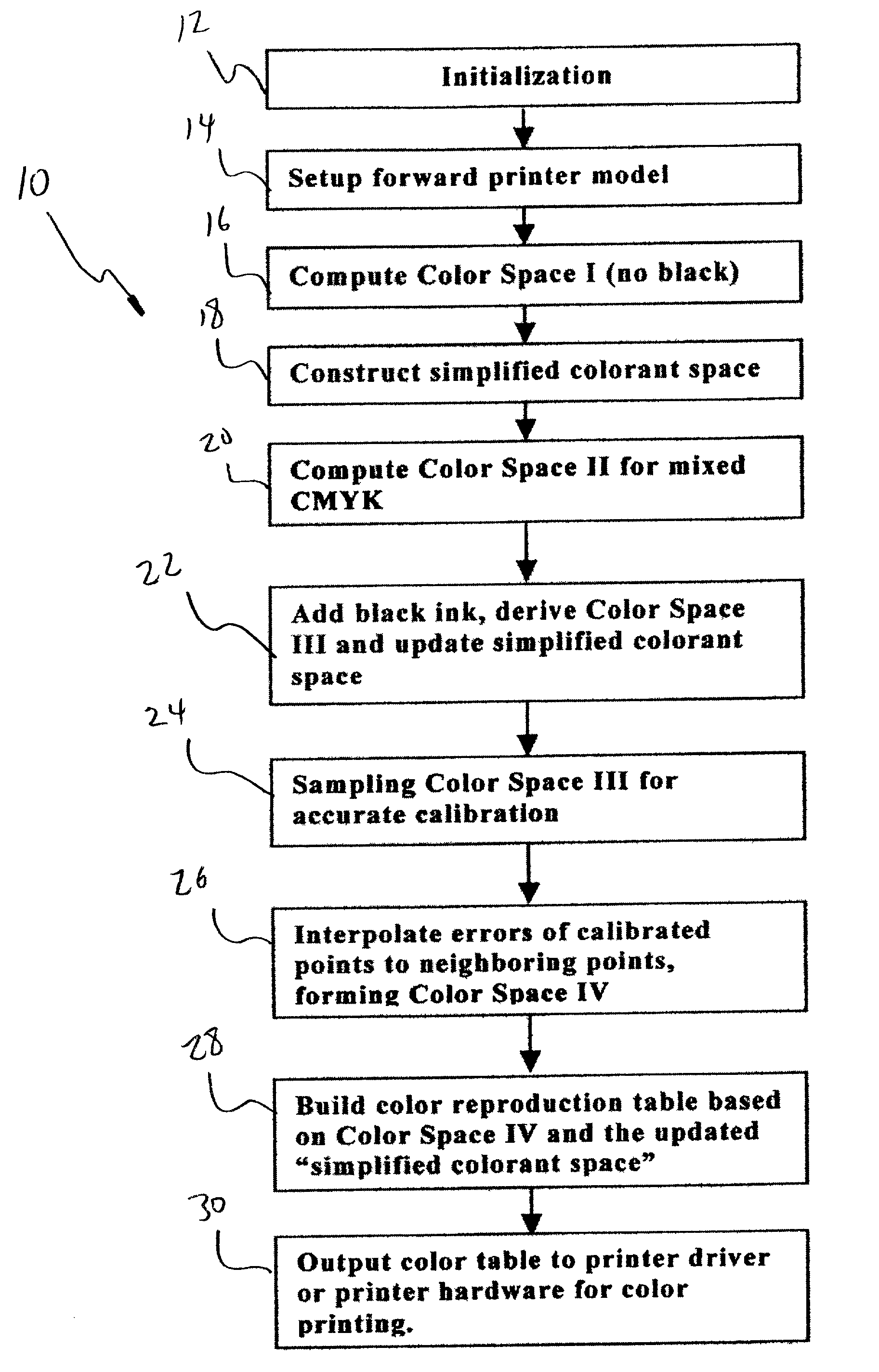Method for mixing inks for high fidelity color printing
- Summary
- Abstract
- Description
- Claims
- Application Information
AI Technical Summary
Benefits of technology
Problems solved by technology
Method used
Image
Examples
Embodiment Construction
[0045]It should be noted at the outset that the present invention involves a computerized process and it is within the skill of those in the art to generate the computer code necessary to carry out the method steps, explained in greater detail below. The result of the method is a color reproduction table that can become part of a printer driver embodied on a computer-readable disk, or it may be programmed into the printer hardware. Whatever the manifestation of the invention, those skilled in the computer-controlled printer art will be able to incorporate the present method into a format for commercial use without undue experimentation.
[0046]According to the present invention, a forward printer model is used to transform a colorant space to a CIELAB color space. The colorant space refers to a Cartesian Coordinate System wherein coordinates represent the amount of ink used to produce a color. For N-ink printing, the colorant space is N-dimensional. There will be N coordinates for any...
PUM
 Login to View More
Login to View More Abstract
Description
Claims
Application Information
 Login to View More
Login to View More - R&D
- Intellectual Property
- Life Sciences
- Materials
- Tech Scout
- Unparalleled Data Quality
- Higher Quality Content
- 60% Fewer Hallucinations
Browse by: Latest US Patents, China's latest patents, Technical Efficacy Thesaurus, Application Domain, Technology Topic, Popular Technical Reports.
© 2025 PatSnap. All rights reserved.Legal|Privacy policy|Modern Slavery Act Transparency Statement|Sitemap|About US| Contact US: help@patsnap.com



